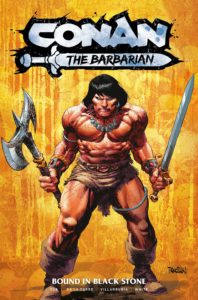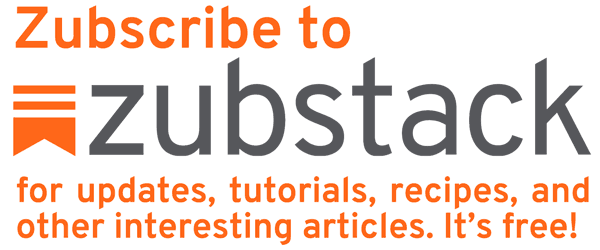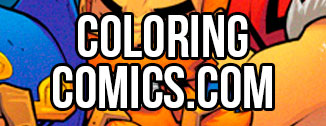Wayward the Board Game was announced back in May and game testing continues on track. The game is designed by Jon Gilmour, co-designer of Dead of Winter and Wasteland Express Delivery Service, and will be published by IDW Games. It’s a co-operative board game with players taking the role of our teen protagonists fighting Yokai in Tokyo. We’re currently play testing the rules and I want to talk about this phase of development as it’s something a lot of people, even board game fans, may not have had much experience with.
Prototyping is crucial in game development. This involves putting together a rough playable version of the game so rules can be tested, options can be explored, and parts can be ditched without spending time/money on graphic design or artwork that may not be used in the final release. At this stage, the game is entirely made up of cardboard counters, print outs and placeholders. In our case, since the game is based on an established comic property, Jon dropped in art from the series to make it look more enticing, but it’s still all temped.
 Printouts, cube counters, card sleeves, and tupperware: Welcome to the testing phase.
Printouts, cube counters, card sleeves, and tupperware: Welcome to the testing phase.As testing continues, we look at how the game runs with the following questions in mind:
Do the core rules work?
Does it make sense?
Does it fit with the setting?
It is easy to explain?
Is it challenging to master?
IS IT FUN?
If the game works well with all these placeholders, then we’ll be ready to beautify it up with great graphic design and new art: The polish.
Let’s talk about how Wayward the game plays so far. To win the default scenario (there will be several to choose from with varying difficulties in the final game release), players must slay Yokai and keep them at bay, building up character abilities and energy points to shut down five power locations called the Goshiki Fudo. As the game progresses, the Weave (mystic strings of power and fate most people cannot see) will destabilize, unleashing more power to the players but also unlocking more powerful creatures. “Solving” one area means letting other spots get worse. Winning requires strategy, synergy, well-timed sacrifice plays, and some luck. The game is lost if the Weave unravels completely.
 Here’s a game in session. Again, everything is temped right now.
Here’s a game in session. Again, everything is temped right now.Although the play strategy is quite different from Pandemic (a stellar co-op board game already on the market), there’s a similar build up of tension as the game opens: Multiple locations are under siege. In the first few turns creatures arrive faster than they can be dealt with and it can feel quite bleak. This is by design. Our wayward teens are under pressure and need to work together to start pushing back against the threats building around them.
Character actions are fueled by energy points and those points can only be gained in one of three ways: adding new creatures to the board, using creatures on the board to attack our heroes, or drawing energy directly from the Weave (which moves the game closer to its end). Energy is then spent to attack creatures (individually or in groups at each location), shop for items, heal, use special abilities (unique to each character), or shutdown a location. Shutting down locations moves the group closer to victory, but it also means there are fewer locations for Yokai to spawn, so they build up faster in each remaining spot.
Combat in Wayward is quite different from the typical D&D-style “roll a die, hit a creature” mechanic. Players bid energy points in a “betting pool” and creatures are represented by the dice. The creature dice are rolled and compared to the amount bid and, if the amount is equal to or less than the combat pool, the creature is killed. Heroes gain re-rolls or other bonuses to reduce the monster roll total as the game progresses. Using less energy for an attack could pay off, allowing you to perform more actions per turn, but a bad die roll means you’re ineffective or injured. Some players will want to play safe and use more energy to ensure victory, but then they’re doing less per turn and the creature build up might outpace them. It’s a risk-reward mechanic that throttles quite well as play progresses and is different from most other games I’ve played.
 Yes, our prototype dice are regular dice with paper squares glued on the sides.
Yes, our prototype dice are regular dice with paper squares glued on the sides.Characters don’t die in Wayward, but when their stamina is depleted they become far less effective: Movement costs extra energy and, most importantly, they can’t stop damage being done directly to the Weave. The more damage the Weave takes, the more difficult the game becomes and the closer to losing our heroes get. Tougher characters will tend to “meat-shield” the Weave, blocking damage while other characters build up larger pools of energy to use their special abilities or shut down locations.
Ayane quickly moves between locations and attacks frequently. She has less re-rolls baked into her abilities but gains attack bonuses so she can bet lower energy amounts with more confidence.
Emi is the toughest character (with her limbs of stone or steel). She absorbs extra damage taken and traps creatures in sinkholes, temporarily taking them off the board.
Shirai absorbs energy from slain Yokai and uses his spirit power to heal himself. At higher levels, he can also heal other characters at his location.
Nikaido is the weakest physically but he can shift energy between characters and move creatures to different locations, which can be crucial.
Rori gains extra energy by tapping directly into the Weave and can hurt multiple creatures at locations with spells of destruction.
 Rori’s prototype character sheet. The final will have all new art and design that makes gameplay choices clear.
Rori’s prototype character sheet. The final will have all new art and design that makes gameplay choices clear.Part of our goal at this stage is to see how the characters work, individually and together, to make sure game balance is maintained and that there are fun combinations of powers being used in concert with each other. The character abilities need to be interesting and appropriate while also fitting the play mechanics Jon has built.
Testing out Wayward has been an amazing experience so far. I try to look at it as both an avid board game player and also the license holder of the property being adapted. First and foremost, I want Jon and the IDW Games crew to make a great game. The best advertisement I could ask for is a top-notch co-op game that stands on its own enticing people to start reading Wayward the comic. Jon’s been wonderful about incorporating key aspects of the series and I’ve been helping him attach story concepts and themes to those game mechanics so it all fits together well.






 Zub on Amazon
Zub on Amazon Zub on Instagram
Zub on Instagram Zub on Twitter
Zub on Twitter
Mr. Zub, I am SO excited for this game! I’d like to learn more about it and discuss any additional details you are able to share for my game blog, The Indie Game Report, if you’re available for an interview! I’ve had a whole bunch of questions written down since the May announcement. I’m really enjoying reading Wayward and look forward to learning more about the game and the release date!
Thanks! Feel free to drop me a line via the Contact page here on my website and we’ll see about setting up an interview, okay?